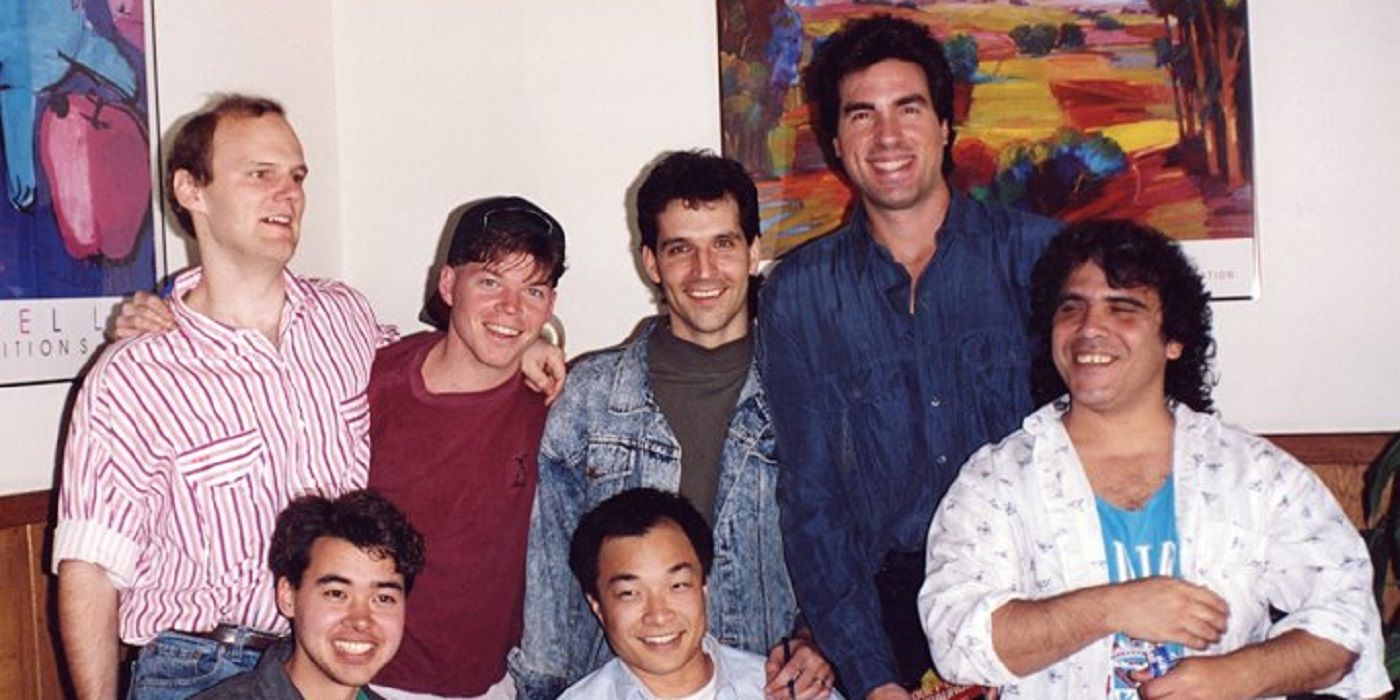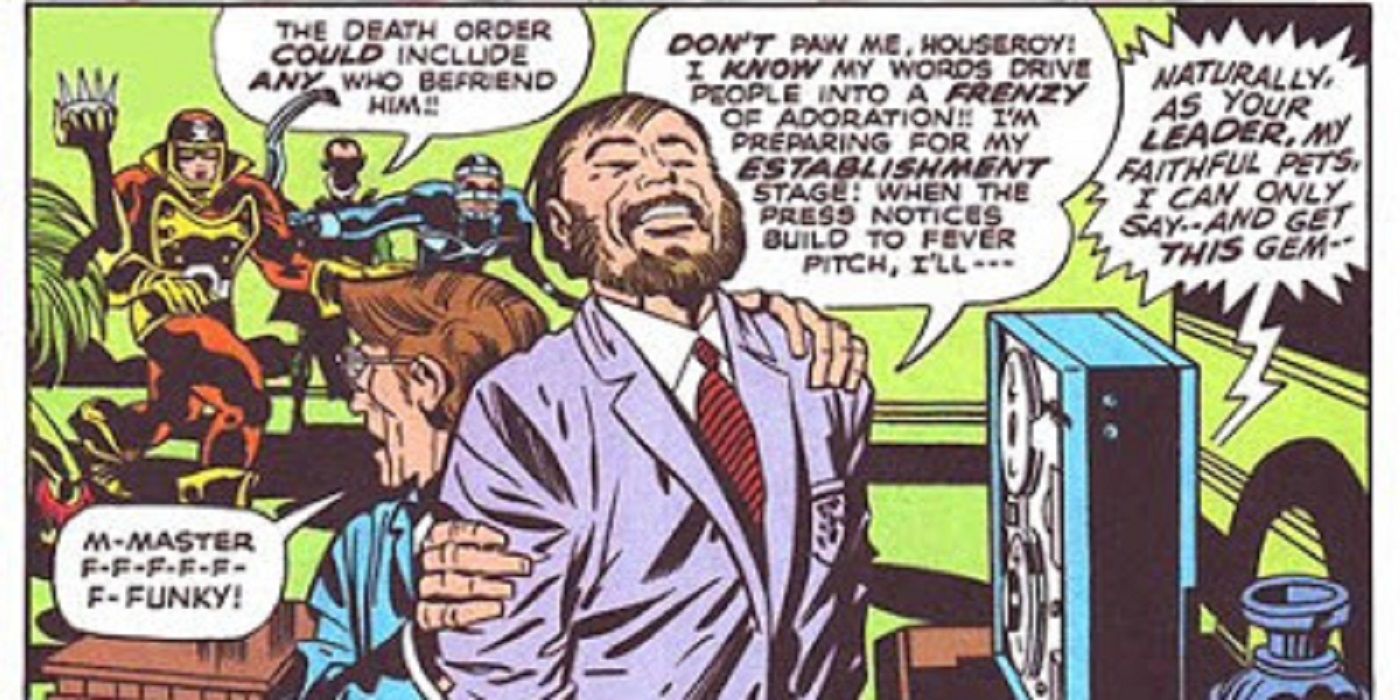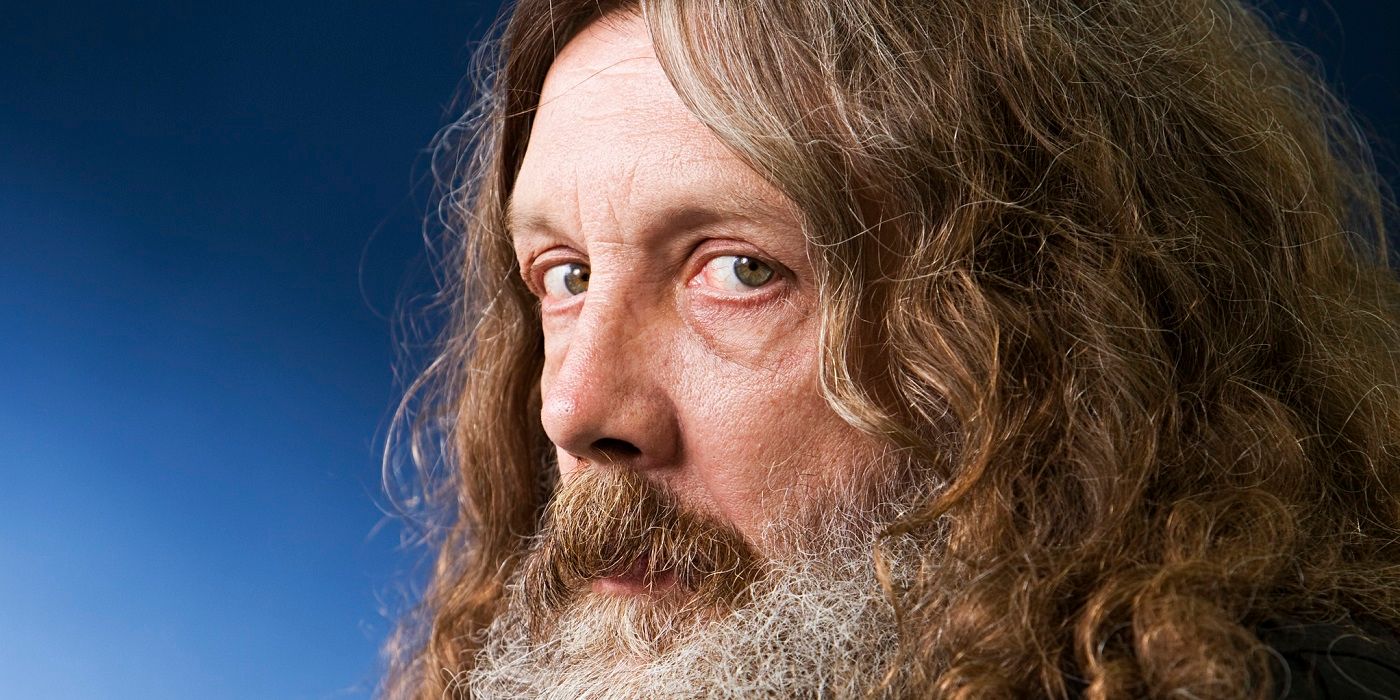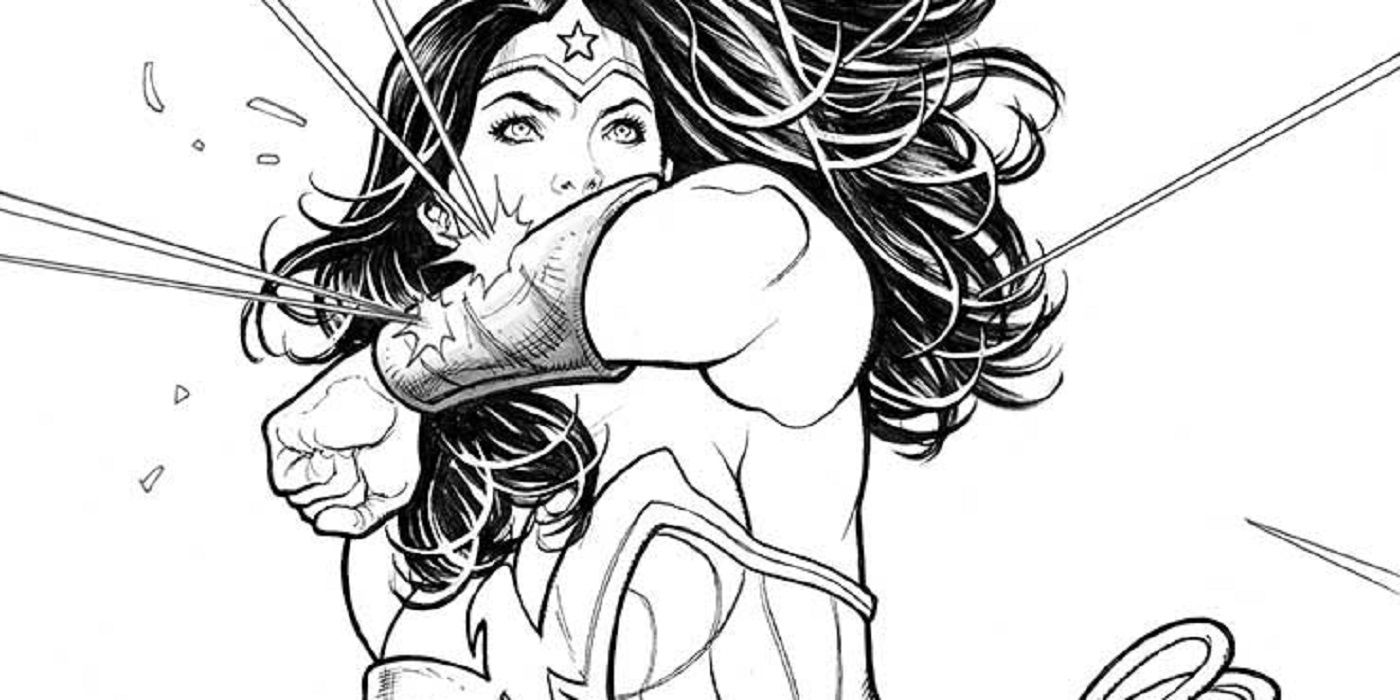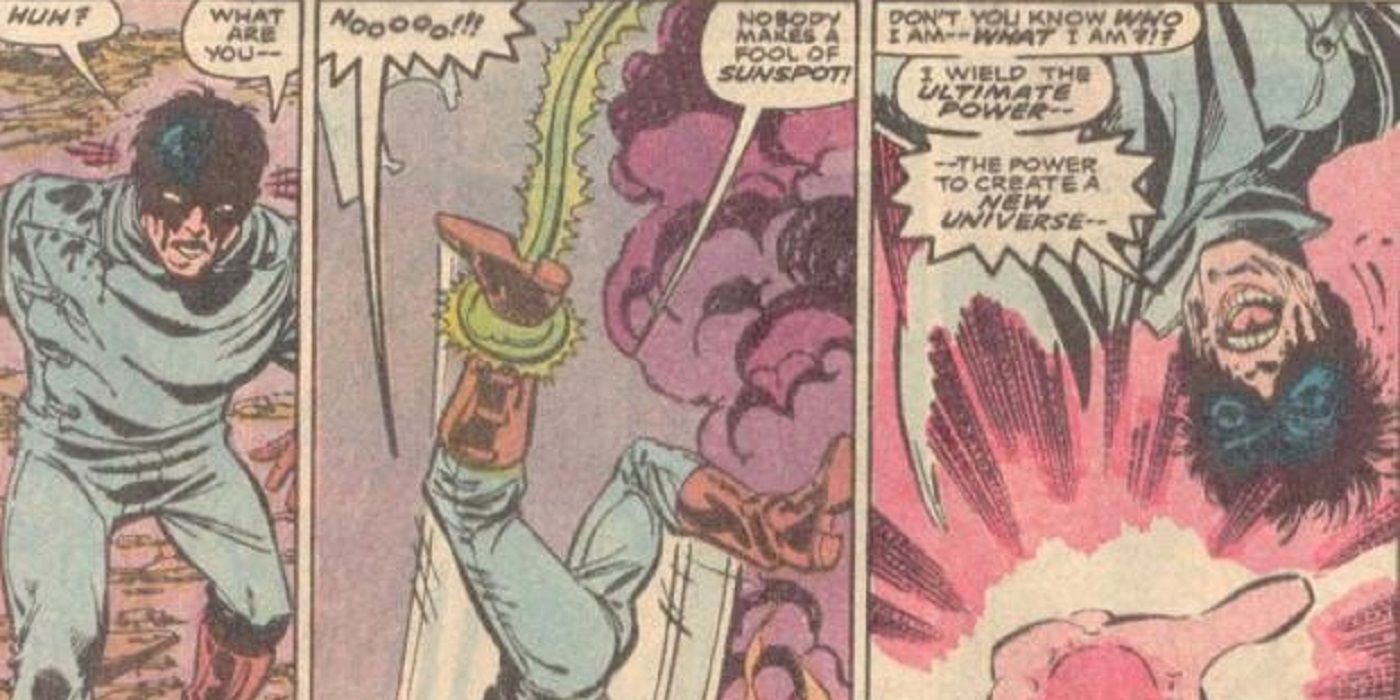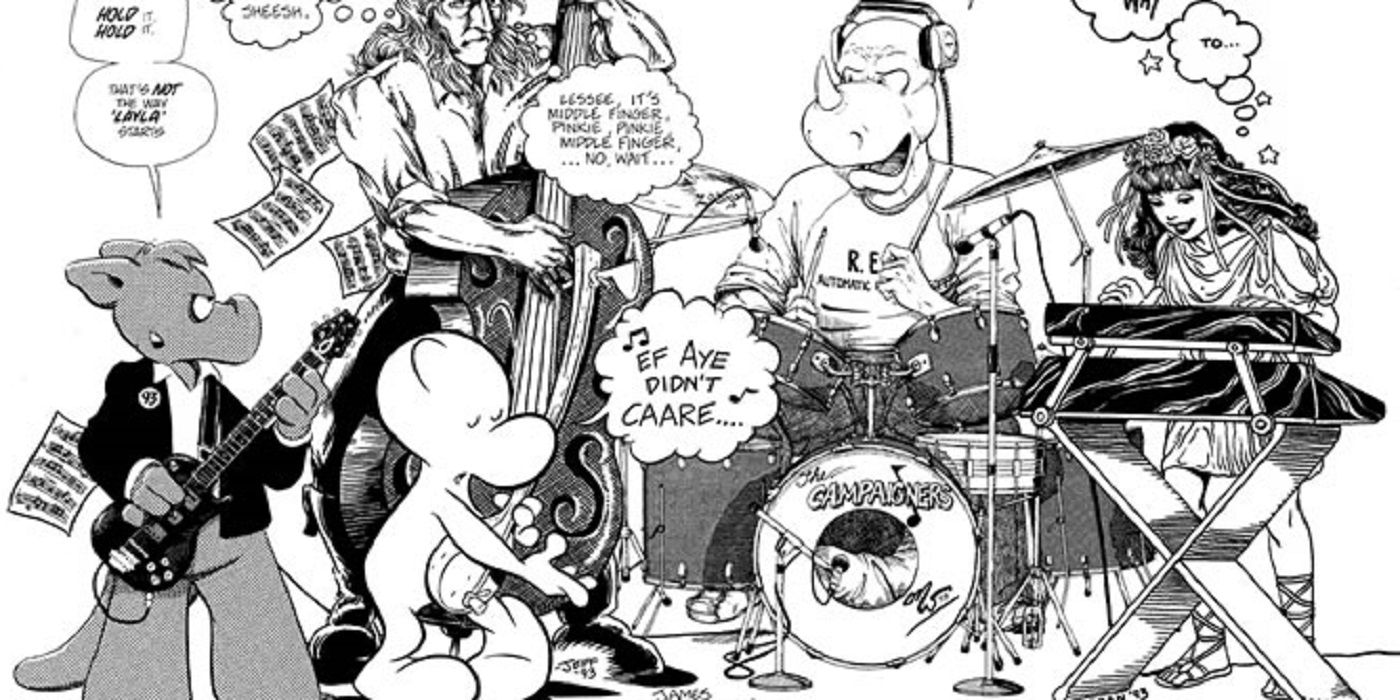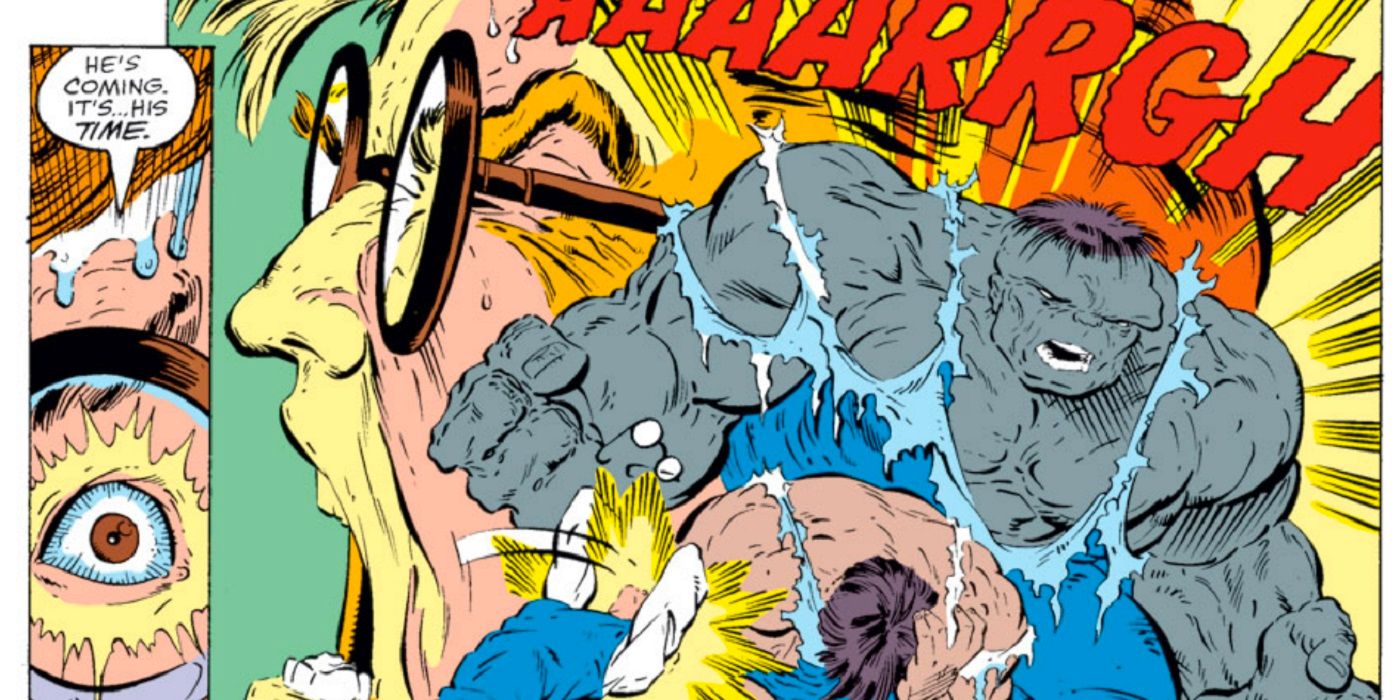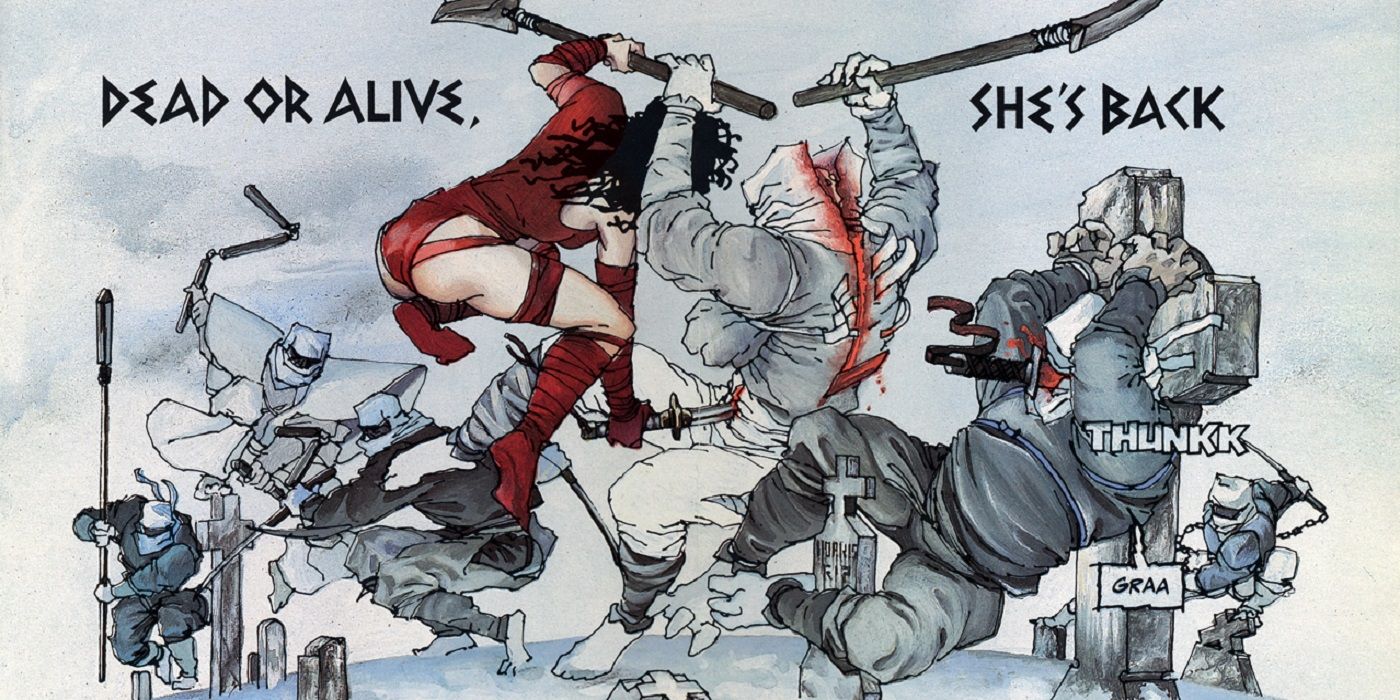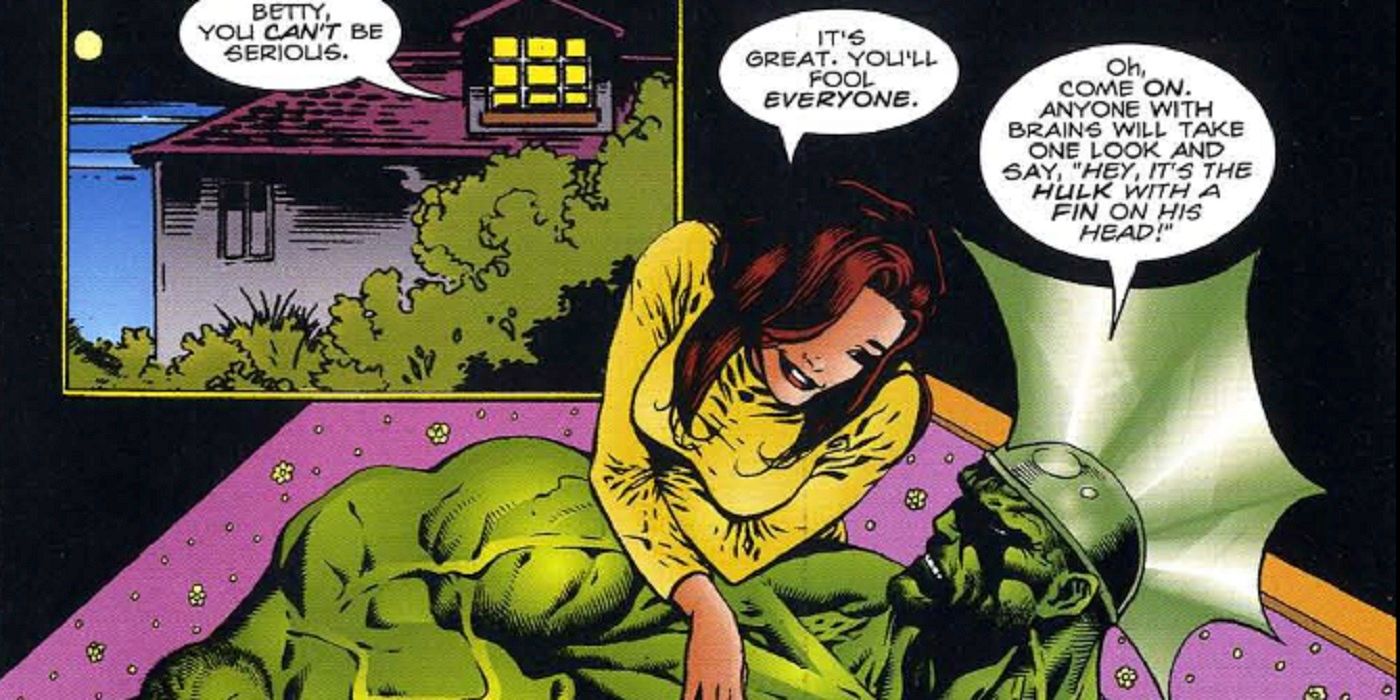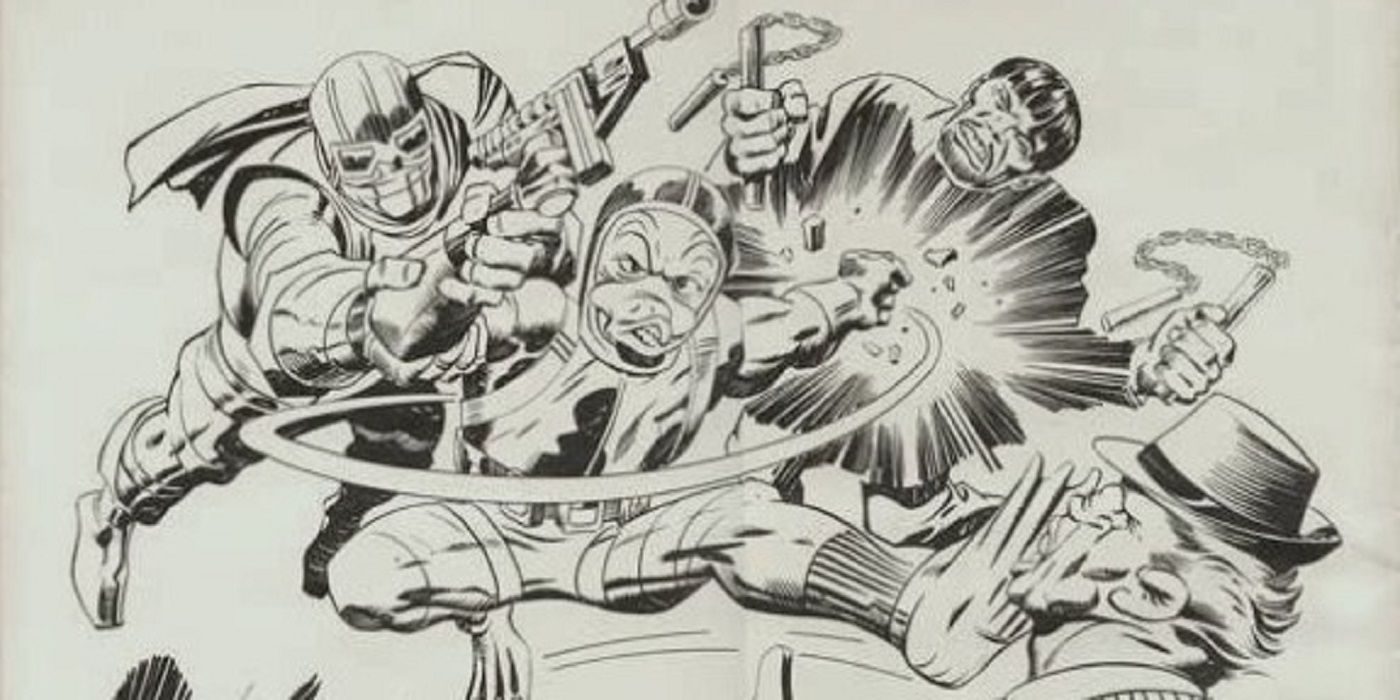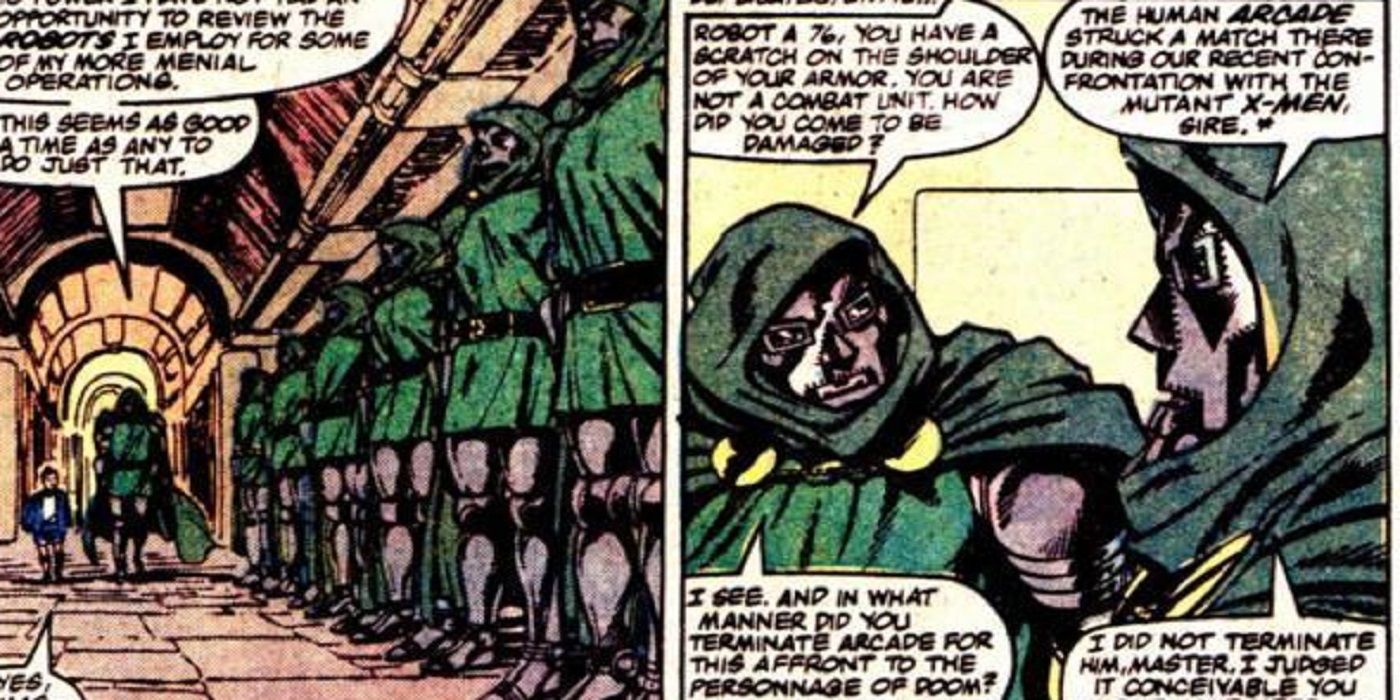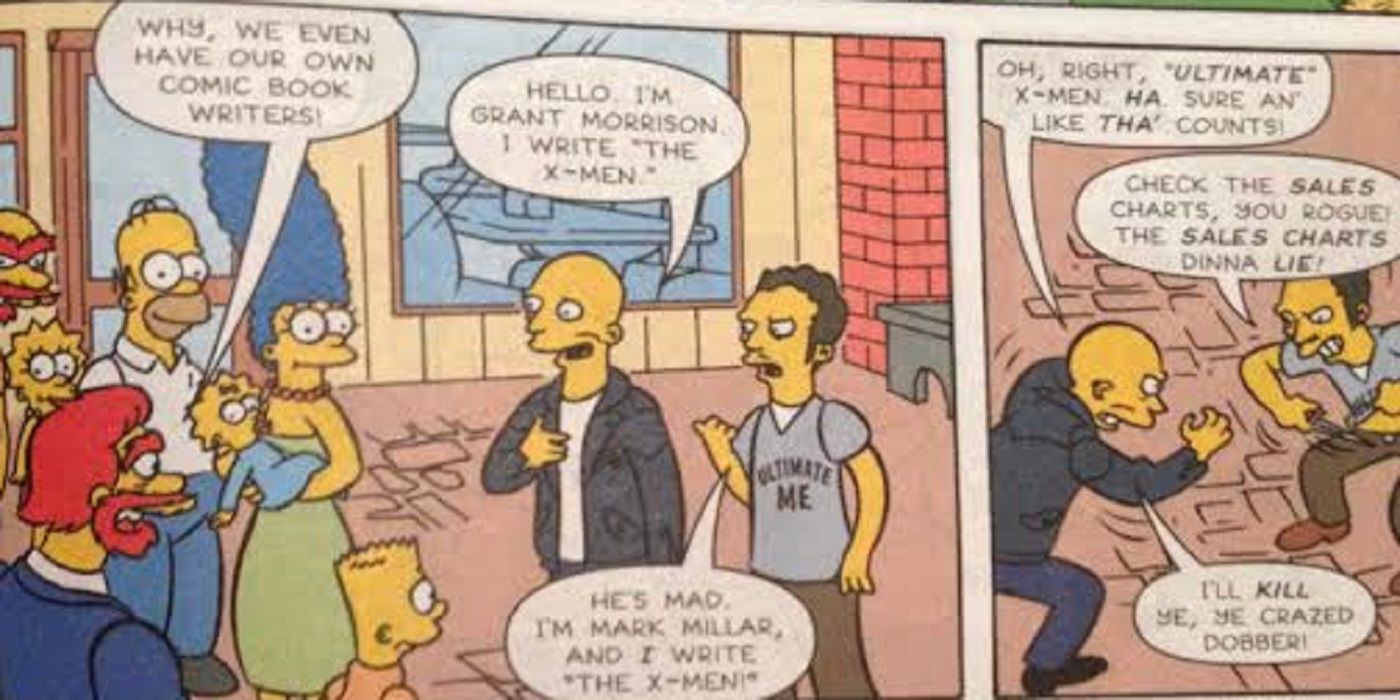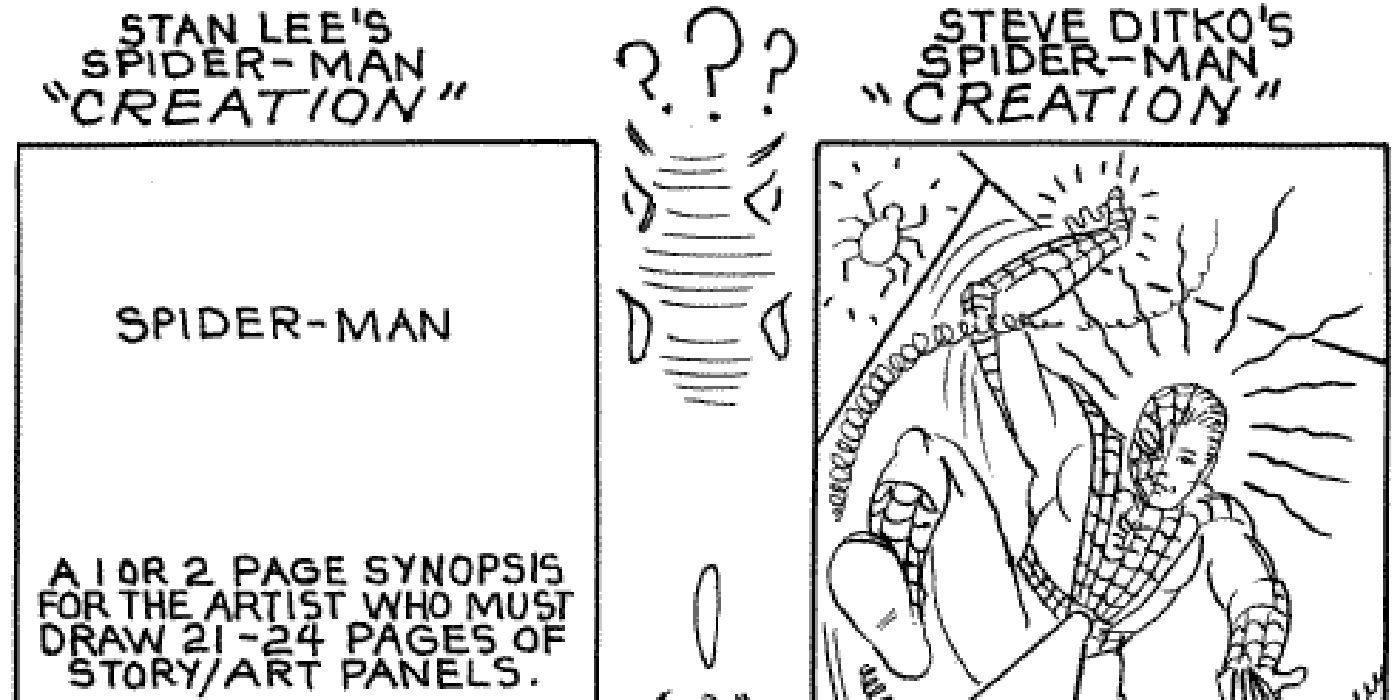Superhero comics have long been known for epic flights of fantasy and sensational conflict between heroes and villains, many of whom are mortal enemies. As entertaining as the comics themselves may be, the stories between the covers have often failed to live up to the real-life conflict behind the scenes. For years, the image that most fans had of comics creators was of the madcap Marvel Bullpen, with creators working harmoniously side-by-side to turn out the latest issues. With tales of Stan Lee jumping on tables, impromptu softball games and spontaneous singalongs, being a comics creator sounded like the best job in the world.
RELATED: Marvel's Assistant Editors' Month: The Greatest Comic Books
In reality, the creative process is not always so harmonious. Whether it’s editorial conflict, bruised egos or clashes between artist and writer, we’ve pulled together some of the most notable feuds between comic creators. Sometimes the truth really is stranger than fiction.
15 STAN LEE AND JACK KIRBY
‘’Whose side are you on?” For Marvel fans of a certain age, this quote doesn’t conjure up memories of the Mark Millar and Steve Mcniven “Civil War” miniseries. Instead, it asks fans to make a choice: are they team Stan or team Jack? The two creators were the unquestioned dream-team of ‘60s Marvel, but when Kirby quit the publisher in 1970, part of the reason was frustration over his huge creative contribution going largely unrecognized. His Funky Flashman character in DC's “Mister Miracle” was a thinly-veiled pastiche of Lee, portraying him as a smooth-talking trickster.
In the years before his departure, Kirby had been responsible for much of the plotting of his titles, with Lee’s day-to-day involvement with the comics decreasing as his other responsibilities grew (Famously, the first Lee knew of the Silver Surfer’s creation was when he received Kirby’s artwork to dialogue). In the years since, arguments have raged on both sides about how much credit each man should be given for their role in Marvel’s '60s revitalization; in an infamous 1990 interview, Kirby claimed that “I’ve never seen Stan Lee write anything.” Sadly, the two men had not reconciled by the time of Kirby’s death in 1994.
14 ALAN MOORE AND COMICS
Alan Moore has written some of the most critically acclaimed comics of all time. His work on “Swamp Thing,” “Whatever happened to the man of tomorrow,” “Captain Britain,” and “Killing Joke” challenged perceptions of what superhero comics could do, while the popularity of “V for Vendetta” and “Watchmen” saw them embraced by the general public and Hollywood. Yet despite Moore’s undoubted talent, his relationship with the comics industry has been a volatile one, characterized by disputes and disagreements.
Moore had left “Captain Britain” over a dispute regarding unpaid invoices, and for years afterwards refused to have anything to do with Marvel, even preventing his Captain Britain stories from being reprinted. His relationship with DC was similarly strained over the issues of creators’ rights and merchandising, leading to his departure in 1989. His time at Image also ended in acrimony and he even left his own Wildstorm imprint, “America’s best comics,” due to his belief that DC (who had recently purchased Wildstorm) was interfering with his work. Sadly, this disillusionment with the business side of comics appears to have tainted Moore’s regard for superhero comics as a whole, and in recent years he has often spoken of his dislike for the medium.
13 FRANK CHO AND GREG RUCKA
Frank Cho has often courted controversy with his art, receiving some criticism for the overly sexualised nature of his artwork. In recent months, Cho has embraced the controversy that comes with such criticisms, creating a number of tongue-in-cheek "outrage" covers that put potentially objectionable material front and center. When Greg Rucka and Nicola Scott relaunched “Wonder Woman” in June 2016, Cho was hired to contribute 24 variant covers for the title. Instead, he quit after producing six, blaming ongoing censorship and tension with Greg Rucka.
Cho claimed that Rucka had attempted to censor his artwork as part of a “hostile power trip,” leaving him with no choice to quit rather than see his artwork altered. Cho’s comments led to a spate of articles analysing the situation, with comments both for and against his actions. Rucka has yet to comment on Cho’s departure, but in recent months, Cho has hinted that he has been in contact with DC about working on “Wonder Woman” after Rucka’s departure. Nothing has yet been officially announced, but it seems a safe bet that Cho will be happy provoking ‘outrage' for some time to come.
12 JOHN BYRNE AND JIM SHOOTER
John Byrne may be a legendary comics creator, but is probably best known to younger fans for his frequent pronouncements on the state of the comics industry: most often where he thinks it is going wrong. Stories abound of Byrne taking issue with a creator or their work, making it sometimes hard to discern what is fact and what is fiction. The relationship between Byrne and Jim Shooter is one where the nature of their disagreement has been disputed by various parties.
Jim Shooter had a tremendous influence at Marvel during his time as Editor-in-chief, from 1978-1987, helping to restore Marvel to health on both creative and financial levels. Many classic runs stem from that period, but there was also public conflict with several creators, including Byrne. He left “The Incredible Hulk” after perceived interference and, in 2015, wrote that Shooter “had become a tyrant with a whim of iron, constantly telling us what we were doing WRONG.” After Shooter had left Marvel, Byrne replaced him as writer on “Starbrand,” the lead title in the New Universe line. Byrne’s first issue saw the destruction of Pittsburgh (Shooter’s home town) by a nuclear explosion – a rather emphatic final word on the subject.
11 DAVE SIM AND JEFF SMITH
Dave Sim and Jeff Smith both made their names working on “funny animal books” that, in reality, are some of the most nuanced, creative and thought-provoking comics out there. In the pages of both “Cerebus” and “Bone,” the men established themselves as master storytellers who could find success with their own creations. If the above sounds like the two men have a lot in common, things didn’t quite turn out that way.
In a 1999 interview with “The Comics Journal,” Jeff Smith recounted a story about when Dave Sim visited his house and expanded on some of his gender theories – “about women sucking the life blood out of men and how they couldn’t think.” Smith claimed that he had threatened to deck Sim if he didn’t stop talking, and that he was later horrified to see the episode dramatized in “Cerebus” #186. Some years later, Sim responded in an open letter, claiming that Smith had lied about issuing his challenge to fight. He rebutted Smith’s claims before challenging him to a fight, generously offering Smith to pick the venue, time keeper and referee. Who would have thought that all the accumulated strangeness in “Cerebus” and “Bone” couldn’t compete with real life?
10 ALAN MOORE AND FRANK MILLER
Alan Moore and Frank Miller may be creators who have seen their work turned into big-budget Hollywood movies, but that’s where the similarities end. Miller’s modern work has courted controversy for what’s often perceived as a hard right-wing stance, whether it is the brutal Batman of “All Star Batman,” or “Holy Terror,” which courted controversy over its depiction of Islam. Moore has described his own political stance as an anarchist, distrustful of government and institutions.
The spat between the two arose in 2011, after Miller wrote on his Blog about the anti-capitalism “Occupy” movement. He described the movement as “nothing but a pack of louts, thieves and rapists, an unruly mob, fed by Woodstock-era nostalgia and putrid false righteousness.” Moore took a more favorable approach, describing the movement as “a completely justified howl of moral outrage,” before complaining that there had been an unpleasant sensibility apparent in Miller’s work for some time. This isn’t the only time that Moore and Miller have disagreed. Their approach to the Joker is also a bone of contention, Moore playing up the parallels between Joker and Batman and Miller taking the stance that the Joker was evil incarnate, positively satanic.
9 TODD MCFARLANE AND PETER DAVID
In the early ‘90s, Todd Mcfarlane and Peter David were both hot properties in the comics world. Mcfarlane had helped launch Image comics and his creation, Spawn, was a regular presence at the top of the charts. Meanwhile, Peter David was receiving critical acclaim for his work on “Incredible Hulk” and “Spider-Man 2009” and had a regular column in the “Comic Buyers Guide.” It was this column (“But I digress”) that was to lead to one of the strangest events of 1993: The Great Debate.
Despite Mcfarlane and David having a successful run together on “The Incredible Hulk,” relations had cooled in the years since. Mcfarlane took issue with some of David’s columns, believing that this was a further example of the way that the media did not treat him and Image fairly. He issued a public challenge for David to debate him, resulting in a widely-publicized event at the Comicfest convention in 1993, on the topic of whether Image and Mcfarlane had been treated fairly by the media. David was voted the debate winner by judges but later wrote that he regretted his participation, as it served no purpose other than to give Mcfarlane everything that he wanted.
8 FRANK MILLER AND MARVEL COMICS
Frank Miller’s legendary run on “Daredevil” still defines the character to this day and his creation of the assassin Elektra was perhaps the crowning achievement of his run, introducing readers to a tragic character that met a violent end. Her impact is measured by the fact that little over a year elapsed between her introduction and “death,” yet this was enough to make her iconic.
Miller was to return to Elektra on three occasions. In “What If?” #35, Miller explored the ramifications of Elektra surviving. The 8-issue miniseries “Elektra Assassin” was published by Marvel’s Epic imprint, but it was left deliberately vague as to whether this took place before Elektra’s appearances in “Daredevil.” Miller’s in-continuity return to the character was in the graphic novel “Elektra Lives Again” where Elektra dies again, this time for good. Or that was the plan, Miller believing that Marvel had agreed that nothing further would be done with Elektra unless he returned to the character. When D. G. Chichester brought her back in “Daredevil” #324, it caused an angry Miller to sever his relationship with Marvel. Miller has not worked for Marvel since this point, and there is little sign of this situation changing in the near future.
7 TODD MCFARLANE AND NEIL GAIMAN
Beginning in "Spawn" #8, Todd Mcfarlane brought in a number of guest writers, including Alan Moore, Dave Sim, Frank Miller and Neil Gaiman. The dispute with Neil Gaiman centered on his work on issue #9, and the three characters that debuted in it: Cogliostro, Angela and Medieval Spawn. As co-creator, Gaiman should have been entitled to royalties for reprints, graphic novels and action figures, but this was not paid in full, Mcfarlane claiming that they had been created under work-for-hire. Further complicating matters was Mcfarlane's recent (or so he thought) purchase of the rights to "Miracleman/Marvelman" which Gaiman had worked on earlier in his career. In 1997 Gaiman agreed to waive his rights to the three Spawn characters in exchange for Mcfarlane's share of Miracleman. It later transpired that Mcfarlane only owned two trademarks for Miracleman logos.
The resulting court battle between Gaiman and Mcfarlane attracted much publicity in the national press, and in the end, the jury sided in favor of Gaiman on all counts. Gaiman was also awarded royalties for some characters in "Dark Ages Spawn" who were deemed similar to his creations. Gaiman later sold the rights to Angela to Marvel Comics, with the character receiving a solo series in 2015.
6 PETER DAVID AND ERIK LARSEN
Peter David and Erik Larsen are both creators with a strong comics pedigree who have worked on a number of different properties over the years, producing both mainstream and creator-owned work. It's also fair to say that while they may have worked on many of the same characters, including Spider-Man and the Incredible Hulk, their viewpoints have often come into conflict, often in a very public fashion. In "Spider-Man" #19 in 1992, Larsen wrote and penciled a story where Doctor Octopus reassembled the Sinister Six, easily defeating the Hulk in the process. Some months later, in "Incredible Hulk" #396, David scripted a follow-up to that encounter. This time, the Hulk defeated Doctor Octopus easily, with one flick of his finger.
The two continued to trade barbs for much of the early '90s, with David addressing the argument that Larsen's creation, the Savage Dragon, was simply "The Hulk with a fin on his head." The two have also argued about creator owned vs company work, Image Comics and much more. It seems a pretty safe bet that the two won't be collaborating on a project any time soon.
5 STEVE GERBER AND MARVEL COMICS
During the '70s, Steve Gerber was one of the most inventive, creative and downright strange writers at Marvel. In the pages of "Howard the Duck" Gerber took a minor character from "Man Thing" and created a title that was funny, satirical, smart and political in tone. Howard's travels through his new world populated by hairless apes allowed Gerber to skewer American society, and helped make the comic a smash hit. Howard ran for president and was turned into a newspaper strip before Gerber left both the strip and comic versions. He subsequently, in 1980, attempted to sue Marvel for ownership of the character. The case was eventually settled in 1982 in Marvel's favor, the unambiguous ruling stating that Gerber's contribution was work-for-hire and that Marvel therefore owned all rights.
In 1995, Marvel approached Gerber to write a story that teamed Spider-Man with Howard, in "Spider-Man Team Up" #5. This was an unofficial crossover with Gerber's Image one-shot, "Savage Dragon/Destroyer Duck," with the same scene being featured from different perspectives. What Marvel hadn't counted on was that in the Image version, Gerber would kidnap Howard and send him into witness protection, giving Marvel a cloned Howard in return.
4 ROB LIEFELD AND THE IMAGE FOUNDERS
25 years after the fact, it's difficult to convey just how huge an event the foundation of Image Comics was. It was a new company intent on challenging the industry big guns, it deprived Marvel of some of its hottest artists and it promoted creators' rights. The seven founders were Jim Lee, Todd Mcfarlane, Erik Larsen, Rob Liefeld, Jim Valentino, Whilce Portacio and Marc Silvestri. Although much of the original publicity around the company concerned the camaraderie between these creators, in real life, relations were not always so harmonious.
Liefeld's comic, "Youngblood," was the first title published by Image, and accumulated huge sales but also significant delays. While Liefeld’s enthusiasm for comics could never be faulted, his work proved divisive. In June 1996, Marc Silvestri withdrew his “Top Cow” imprint from Image, partly due to business concerns over Liefeld. In September ’96, Liefeld announced that he had resigned his position with Image, shortly before his fellow founders issued a press release that they had fired him. Liefeld brought “Youngblood” back to Image in 2008, but in the last few years, the majority of his work has been for Marvel or DC.
3 CHRIS CLAREMONT AND JOHN BYRNE
Chris Claremont and John Byrne are the unquestioned dream team on "Uncanny X-Men." Their run, from #108-143, introduced concepts, ideas and characters that are still being utilized now, decades later. They also formed an impressive team on a number of other titles, including "Power Man and Iron Fist," "Marvel Team-up" and "Iron Fist." Unfortunately, this fertile partnership came to an end when Byrne, increasingly unhappy with Claremont's approach to certain characters, accepted the assignment of writing and drawing "The Fantastic Four." Byrne's run on FF was a high-point for the series, but it was noticeable that the two creators still took pot shots at each other over ways that their characters "should" behave.
In "Uncanny X-Men" #145-147, the X-Men fought Arcade and Doctor Doom. Frustrated by what he perceived as Doom's poor characterization, Byrne later provided the explanation that the Doom in Claremont's story was actually a Doombot, one who was destroyed for his actions. This back and forth continued for some years, until Byrne had a brief spell scripting "Uncanny X-Men" in the aftermath of Claremont's departure. Since then, the two have collaborated again, on a 2004 JLA story.
2 MARK MILLAR AND GRANT MORRISON
On Grant Morrison's UK work, including "Doctor Who," "Zoids" and "2000AD," he'd proved that he could bring depth to the most unappealing concept. When he made the leap to American comics in the late '80s, with well-received runs on "Animal Man," "Swamp Thing" and many others, his status as a legendary writer seemed assured. In the mid '90s, Morrison began to collaborate with a young writer named Mark Millar, both on "2000AD" stories and then on American titles such as "Swamp Thing" and "Aztek: The Ultimate Man." So, what went wrong?
The exact cause of the fallout doesn't appear to be clear. While Millar tends to shy away from the subject, Morrison is more forthcoming about his views on his former collaborator. In 2011 he told "Rolling Stone" that as he and Millar were both in Glasgow, "There’s a very good chance of running into him, and I hope I’m going 100 miles an hour when it happens.” In another interview, to promote his book, "Supergods," Morrison said, "I wish him well but there’s not good feeling between myself and Mark for many reasons most of which are he destroyed my faith in human... nature." It seems safe to say that anyone hoping for a Morrison/Millar relaunch of "Aztek" may be waiting some time.
1 STAN LEE AND STEVE DITKO
The dispute between Stan Lee and Steve Ditko is one of the most fascinating in comics, made more so by the fact that Ditko, with his reclusive lifestyle, has never explicitly given his side of the story. We've heard Stan recount countless times the tale of Spider-Man's origin and Ditko's departure from the book, but from Ditko there's been little attempt to make his case. The dispute between the men is made even more tragic due to the quality of their work together. On "Spider-Man" and "Doctor Strange," they created characters and stories that will live forever.
This notion of creation is at the root of the Lee/Ditko feud. Specifically, who created the character of Spider-Man. Stan has long argued that without the writer coming up with the original idea to give to the artist, there is nothing. Ditko contends that without the input from the artist to bring it to life, the idea is mere words on paper. In recent years, Stan has taken to calling Ditko the co-creator of Spidey, but interviews suggest (including a horribly awkward conversation with Jonathan Ross in the 2007 BBC documentary, "In Search of Spider-Man") that he may have arrived at this conclusion only grudgingly so.
There we have 15 of the most notable creator feuds. Have we omitted any deserving disagreements? Is there a Twitter flame war that we've overlooked? Let us know your thoughts in the comments and on Facebook.

